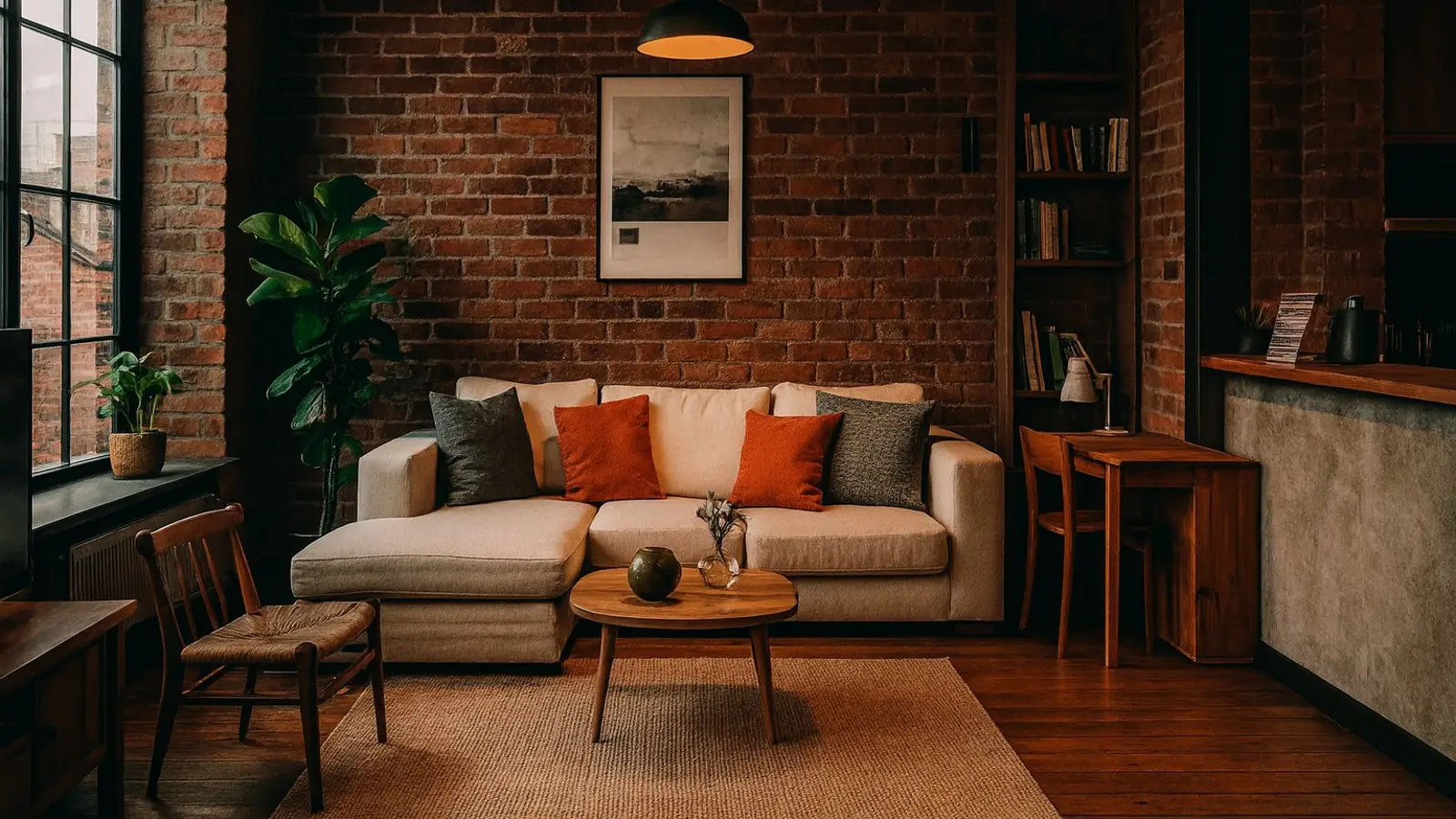Smart Design Tips to Make Your Small Apartment Feel Spacious
Discover proven interior design tricks to make small apartments look brighter, larger, and more comfortable—no renovation required. Simple ideas, stunning results.

Generated by Dall-e
A compact apartment doesn’t have to feel like a tight squeeze. With thoughtful design choices, even the most modest square footage can feel open, bright, and welcoming. Interior designers often rely on simple tricks that anyone can try at home—no renovation crew required. Here’s a breakdown of practical ideas that make a noticeable difference.
Light Colors and Unified Tones
One of the simplest and most effective ways to visually enlarge a space is by using light colors. Shades like white, cream, pale gray, and soft pastels naturally reflect more light and give rooms an airy feel. But it’s not just about picking a pale hue—it’s important to coordinate your overall palette. When the walls, ceiling, and furniture share similar tones, the result is a seamless look that blurs room boundaries and helps everything feel more spacious.
Texture matters too. Glossy surfaces bounce light around the room, creating a subtle illusion of depth. Mirrors work on the same principle. Placing one opposite a window can instantly brighten the space and double the visual volume of the room.
Let There Be (Layered) Light
Lighting has a dramatic impact on how we perceive space. The more natural light, the better. Swapping out heavy curtains for sheer tulle or minimal roller shades helps daylight flow in unobstructed.
To take it further, layered lighting adds depth. Overhead fixtures, floor lamps, desk lights, and accent lighting in niches all contribute to a gentle contrast of light and shadow. This combination softens the room’s edges and expands its feel—while also making the interior more dynamic and visually interesting.
Smart Furniture and Vertical Thinking
When it comes to furnishing a small apartment, less truly is more. Minimalism isn’t just a style—it’s a strategy. Keeping decor and furniture to a comfortable minimum makes rooms easier to digest visually. That said, a space shouldn’t feel empty. Multi-functional pieces are key: a sofa with built-in storage, a fold-out table, or a bed with a lift-up base can save both floor space and clutter.
Instead of spreading out, think up. Tall bookcases and wardrobes that reach the ceiling make use of vertical space and draw the eye upward, making ceilings seem higher than they are.
If your home is a studio or serves multiple purposes, subtle zoning can help organize it without shrinking it. Open shelving units, folding screens, or area rugs can define spaces without closing them off.
Flooring, Patterns, and Flow
Continuity goes a long way in making a space feel larger. Using the same flooring throughout the apartment helps maintain visual flow. Avoiding tall thresholds or abrupt transitions between materials keeps things cohesive and open.
Lines also play a trick on the eye. Vertical stripes—whether on wallpaper or elsewhere—give the illusion of extra ceiling height. Horizontal lines, meanwhile, make walls appear longer. Even a long, low cabinet can serve the same purpose when placed along a wall.
Less Clutter, More Impact
Decor should enhance a room, not overwhelm it. Too many trinkets or small framed artworks can break up a space and make it feel crowded. A better approach is to choose a few standout pieces that complement the interior and let them shine.
And mirrors deserve a second mention. A large mirror placed on a wall, especially across from a window or light source, can instantly amplify brightness and scale.
With these practical design choices, even a tiny flat can be transformed into a cozy and visually spacious retreat. Most of the techniques are budget-friendly and require nothing more than a fresh perspective and a few small updates.
